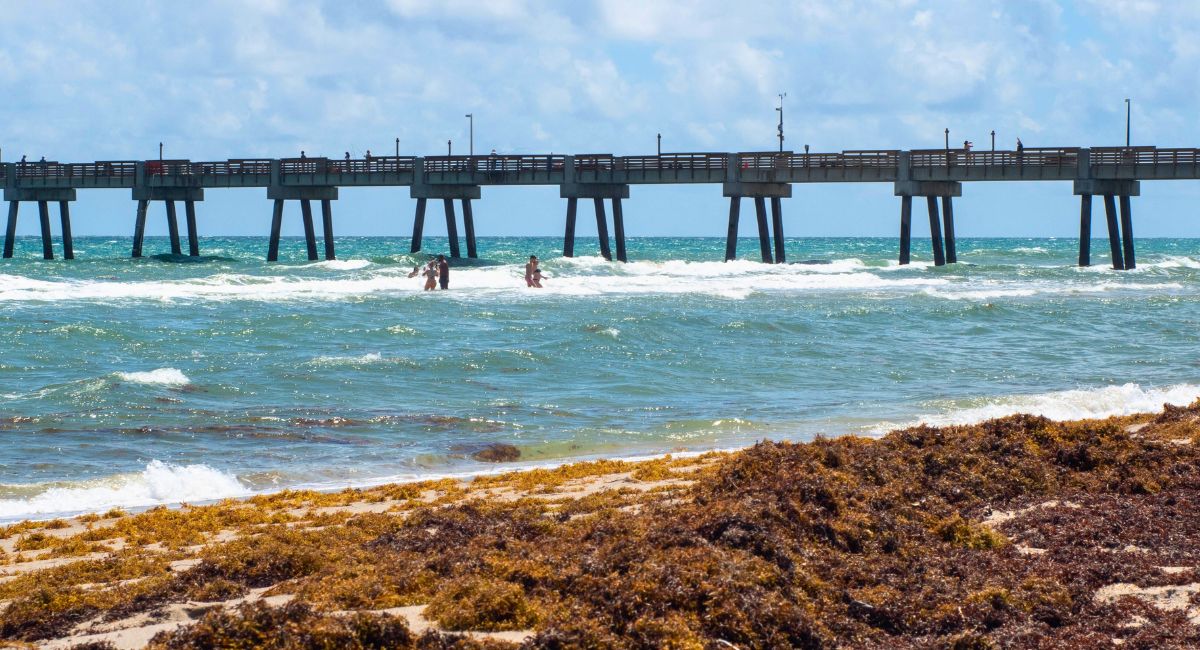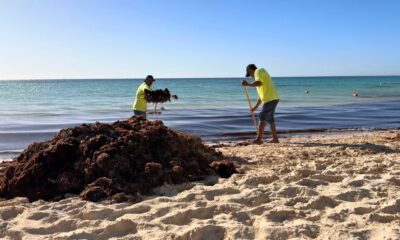Travel
Sargassum seaweed begins invading Florida beaches in May

It is unknown how much sargassum will wash up on South Florida shores. However, according to historical data, the worst affected areas are expected to be the Keys and the part that goes from there Miami to Jacksonville.
According to reports, these areas will be largely sargassum-free until the end of May.
In March, scientists observed only 75 percent of the amount of sargassum seen in the same month last year. It’s a positive number, but still very high.
“Unlike most previous years, the total amount of sargassum fell from around 9 million tonnes in February to around 6.5 million tonnes in March.‘ reads a report from USF’s Optical Oceanography laboratory.
“The total amount in March was still above 75% of all previous March months, indicating that 2024 could still be an important sargassum year,” they concluded.
Countries such as Mexico and the Dominican Republic have reported an increase in the arrival of the algae after months of small quantities.
Mexico had to raise its sargassum alert to “Level Two” because the country has seen a spike in the seaweed in Cancun and nearby cities.
According to local forecasts, Playa del Carmen alone will receive up to 300 tones per day in the coming weeks.
The beaches of the Dominican Republic, in turn, have reported an increase in sargassum levels since two weeks ago.
Most Caribbean countries that are also suffering the ravages of this phenomenon have chosen to invest in ships equipped with special technology to collect the seaweed on the open sea. In the United States, such an option is currently prohibited, because sargassum provides shelter for marine species.
Florida has hired specialized workers to clean the beaches twice a week with heavy machinery, but only in places where turtles can nest.
As a result, local communities are on the brink of major losses in tourism revenue.
“Economically, a ‘severe’ sargassum event could have an impact of more than $20 million in the Keys alone,” said FAU research professor Brian Lapointe.
Sargassum season in 2023 and forecast for 2024
Several authorities have indicated that this year’s sargassum season may not be as difficult as in 2023. But it will be relevant.
For example, in countries like Mexico the season officially started at the end of March, while last year the beaches were covered in seaweed at the end of January.
Last year, the Great Atlantic Sargassum Belt, which was nothing more than a vast 5,000-mile-long mass of seaweed, threatened ecosystems, livelihoods and tourism industries in the Caribbean, according to researchers at the University of South Florida.
In December 2023, the size of the bloom broke records, which is a telltale sign that we will also see a major arrival this year.
“This [satellite observations made in December] indicates that 2024 will be another important Sargassum year,” Academic experts on sargassum from USF published in January.











